Why Are My Plants Turning Yellow? Yellowing of leaves is a natural phenomenon if it is happening systematically. If old leaves get yellow and pale and finally replaced by new ones then it is fine. Otherwise, Chlorosis is the main reason for plants turning yellow. Chlorosis is the condition in which a plant loses its green coloring due to the deficiency of chlorophyll.
It seems pretty simple, isn’t it? Yes, it does but actually it is not that simple… No gardener likes Leaves turning yellow, neither do I.
The reason behind Chlorosis is the main problem. Every gardener has to face it & trust me no one likes it to admit.
Do You know the main source of Chlorosis? It is Overwatering. It is observed that more than 75% of cases Overwatering or uncontrolled water management is the culprit behind the yellowing of leaves. Think once before watering and that’s it.
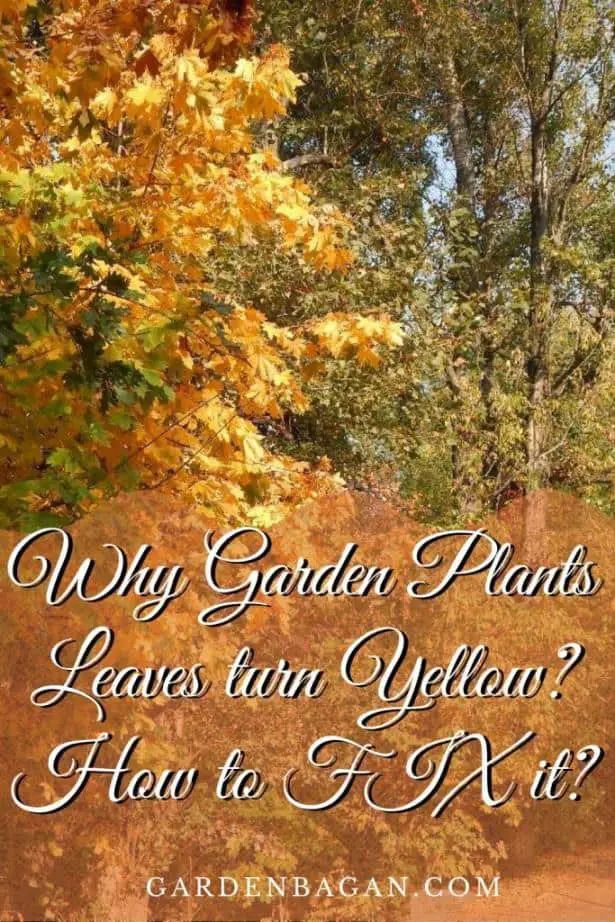
Check out my previous post: How to grow button mushroom at home?
What nutrient deficiency causes yellow leaves?
Overwatering is an interesting and silly mistake but this is not the only one causing yellow leaves. Yes, Excess or deficiency of some nutrients also causes yellowing of leaves.
There are 17 essential nutrients required by most plants to keep healthy. Some are required more than others. A plant needs at least 3 important nutrients which are – Nitrogen, Phosphorus, and Potassium. Others are considered macro & micronutrients. Some important plant nutrients are-
- Calcium
- Magnesium
- Sulfur
- Boron
- Copper
- Iron
- Manganese
- Molybdenum
- Zink
The deficiency of any of these nutrients can harm plant growth. Yellowing of leaves is common with the deficiency of most of these nutrients.
| Nutrients | Deficiency Symptoms |
| Nitrogen | General Yellowing of Older leaves followed by Younger ones.
The rest of the plant seems light green. |
| Potassium | The yellowing of veins begins at the base due to insufficient Chlorophyll formation (Chlorosis).
Older leaves may wilt, it may look burnt. |
| Magnesium | Older leaves Turn Yellow at edges. A noticeable green arrowhead pattern can be observed in the center of the leaf. |
| Sulfur | Younger leaves turn pale & yellow followed by older leaves. |
| Iron | Significant Yellowing occurs between the veins of young leaves.
The veins look green and short. |
| Manganese | Yellowing in leaves occurs between the veins of young leaves.
Stunted growth & deformed frizzle tops. The reduction in overall plant size including leaves, flowers, and fruits. The appearance of dead spots or patches is very common. |
| Molybdenum | Older leaves turn yellow at the bottom of the plant.
The rest of the plant may look pale light green. |
| Zinc | Shortening of central & branched veins.
Yellowing between the veins in new leaves. Terminal buds and leaves may appear rotted. |
Most of the time deficiency of one nutrient is linked with the deficiency of others. Generally, deficiency of more than one nutrient collectively causes severe yellowing of leaves.
What are the other reasons for the yellowing of Plants?
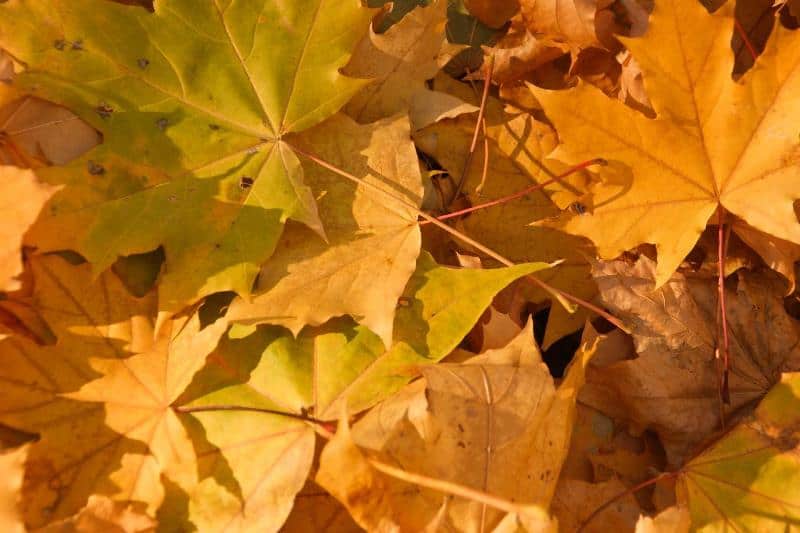
Nutrient deficiency is one important reason for the yellowing of plants. There are some other factors that can contribute to frequent yellowing of leaves or sometimes the whole plant.
Some of these natural factors for yellowing of leaves are-
- Overwatering or Under Watering
- Excess or deficiency of proper sunlight
- Too low or high temperature
- Over or Under fertilization
- Pest or Insect attacks
- Fungal, Bacterial, or Viral Diseases.
- Transplant shock
Overwatering & Underwatering
Excess or deficiency of water, especially in containers, can cause yellowing of leaves. Too much water can dilute the concentration of chlorophyll. On the other hand, scarcity of it can reduce the formation of chlorophyll.
Both of these situations will lead to frequent yellowing of plant leaves.
Improper Sunlight
Propper lighting is very essential for photosynthesis. Technically, sunlight or any form of light is required to prepare chlorophyll. If proper lighting is not available then the plant will lack sufficient chlorophyll to keep it green. Ultimately it may turn pale yellow.
Insufficient Temperature
Too low or too high temperature can cause yellowing of the leaves. This is a very common problem during cold winter and hot summer days. The effect of temperature is high observed in seasonal or annual plants. Most tropical annual varieties turn yellow during winters.
Improper fertilization
Every gardener even the professionals wants their plants to grow faster and bigger. This need sometimes becomes an obsession and I admit that. New gardeners apply excess of fertilizers to get this result but they fail. Too much chemical or even organic fertilizer will disturb natural nutrient concentration. The first thing you will observe with improper fertilization is yellowing and dropping of leaves.
Yellowing due to Pest or Insect Attacks
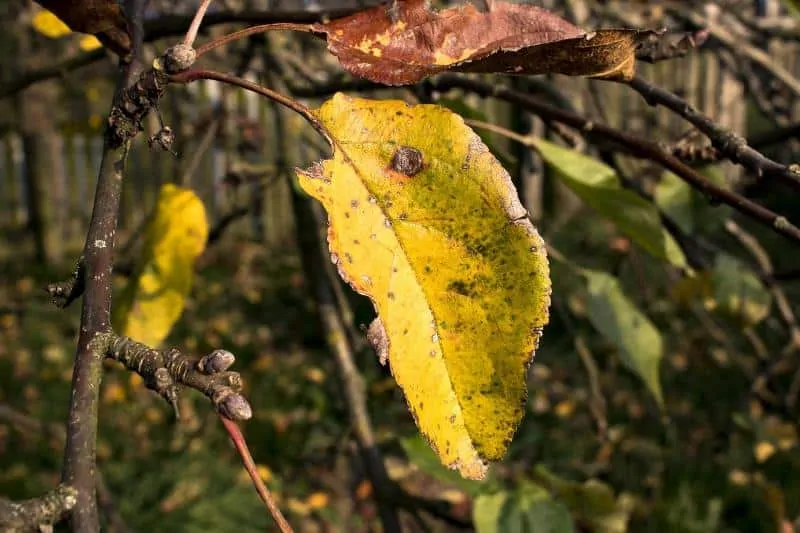
Any plant or leaf can turn yellow due to several pests or insects. These tiny creatures are known to feed on plant sap and hence cause several diseases. They also damage the flow of nutrients and the plant turns yellow.
The common insects & pests that are responsible for the yellowing of leaves are-
- Aphids
- Whitefly
- Mealybugs
- gnats
- grubs
- nematodes
- snails
- slugs
Fungal, Bacterial, or viral diseases
Sometimes a pest or insect attack is followed by fungal & bacterial attacks. The Black spots, blights, rusts, and scalps are common in plants affected by any fungal or bacterial infection. The fungal attack is the common reason for the yellowing of soft plants especially seedlings.
Transplant Shock
This is the final and very common reason for the yellowing of any plant. Most of us are familiar with this situation. Whenever you bought a new plant and transplant it instantly, this happens. The plant will droop and leaves turn yellow. It is also very common with indoor plants.
Why do indoor & outdoor plant leaves turn yellow?
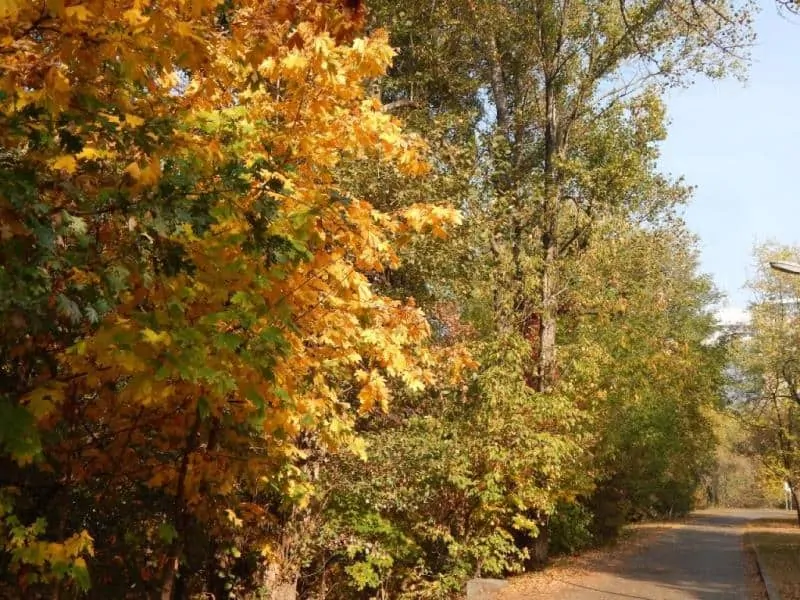
Well, there are lots of reasons that can cause the yellowing of leaves. This is a generalized query, we all think like this. It is very common to ask but the answer to this is not so common.
Every situation is different, every plant is different. Indoor plants like the tropical climate. They prefer more warmth and humidity but can not survive sudden temperature change. Also, some need more water while other don’ts. Anything wrong in this situation can cause the plant in shock. Indoor plants are prone to frequent yellowing due to transplant shock.
Outdoor plants on the other hand are more tolerant of temperature change but they are susceptible to other factors. The plants in your garden need sufficient sunlight, proper watering, fertilization, and protection from any infections.
Altogether plant wether in your house or in the garden, both need proper care to prevent the yellowing of leaves. Overall, chlorosis is the main reason for the yellowing of leaves.
How to fix yellow leaves on plants?
Think of a situation, you bought a new plant and find that the leaves turning yellow. It is the biggest nightmare for any hobby gardener. At least for me, I hate this situation. Most of the time you are sure whether your purchase will be fruitful or not.
The worst situation is when you face the same condition with old healthy plants. If you don’t act quickly then most probably you will lose the plant.
After experimenting with plants for more than 10 years I have come up with some very easy solutions.
steps to control the yellowing of leaves.
- First, start with learning the general life cycle of the plant. If it is a seasonal plant then leaves turning yellow is common. There is no need to worry about it. Else if it old and mature or sometimes in fruiting or harvesting stage. All these can turn the plant pale or yellow.
- In these situations, you can control yellowing by allowing the plant to acclimatize. Harvest the fruits in time, remove dead flowers, and avoid seed formation if not required.
- Next check the soil ph, You can try my personal favorite Ph testing kit on Amazon. Yellowing is also very common with soil having high Ph values (Value lover than 7 is acidic and more than 7 is alkaline, Ph 7 is neutral and salty).
- Study the plant’s requirements for ph. Then add organic matter like manure or composts to decrease the ph. Add wood ash to increase the ph.
- Also, keep the soil soft and well-drained for proper root growth. Soil texture is a very important factor for plant health. Check out my soil recipe for indoor plants.
- Next checkout for nutrient deficiency symptoms and follow the table given below to fix it.
- Also, adjust the shade or exposed to control temperature and lighting. Most of the time this will fix your problem within weeks.
- Check out for any pest, insect, fungal or bacterial infections. This can be caused by Proper treatment with pesticides & Fungicides. Alternatively, you can use Neem oil extract, Soapy water, and seaweed extract with Epsom salt. Read this for more details on Pest Control: Common Succulent Problem: 6 Pests and their treatment
- Keep the soil moist but never let it completely dry or get soggy. Complete dry or too wet soil is useless for most plants. Therefore, maintain proper and regular watering.
- Just like watering fertilization is also very important. Maintain regular intervals and don’t overdo it.
How to fix nutrient Deficiency to stop the yellowing of leaves?
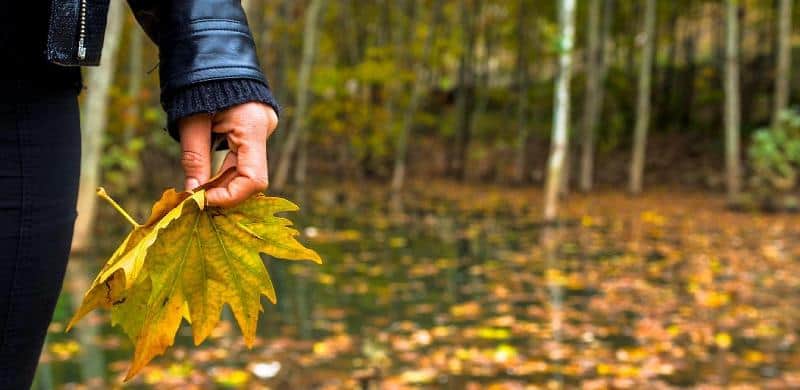
I generally prefer NPK 18:18:18 with sulfur & Iron, seaweed extract, and Mustard cake powder to deal with nutrient deficiency. The use of organic compost is the best way to handle nutrient deficiency in the soil.
| Nutrients | The solution to the Deficiency in soil |
| Nitrogen | Ammonium Nitrate, Urea, Cow dung compost, vermicompost, Humic acid, Azotobacter, and leaf mold can be used. |
| Potassium | Potassium nitrate, potash, vegetable waste compost, fruit skin compost can be used. |
| Magnesium | Any organic compost, Magnesium salt or Epsom salt can be used. |
| Sulfur | Copper sulfate, Urea with Sulphur, or other sulfates can be used. |
| Iron | Iron chelate, Organic Compost rich in humic acid can be used. |
| Manganese | Any manganese substrate, seaweed extract, or good quality organic compost is enough for this situation. Most of the time it is applied with zinc to maintain the balance. |
| Molybdenum | Any Organic Compost, seaweed extract, peanut powder can be used. |
| Zinc | Any Organic Compost, seaweed extract, peanut powder, and mustard cake with NPK 19:19:19 can be used. |
Can yellow leaves turn back green?
It depends. Yes, some leaves can turn back green if you feed the plant properly. But most of the time yellow leaves will eventually droop and fall. The new leaves will grow healthy and greener.
A yellow leaf and only turn back green if and only if it is new and effected by nutrient deficiency. It should be healthy enough to regain nutrients and form chlorophyll.
Can a yellowing plant be saved?- Yes, you can easily save any yellowing plant just by following proper precaution measures. Maintain proper watering & fertilization. Keep the soil healthy and loose for healthy root growth. Provide proper sunlight and temperature and act fast if the plant is prone to any pest or diseases.
Remember you can not prevent natural yellowing in seasonal or annual plants.
Should I remove yellow leaves?- You can remove yellow leaves but it is not necessary. Yellow leaves may look odd but eventually, they will fall on their own. There is no need to pick or remove each one. In fact, there is nothing to worry about if just a few of them are yellow. If you find more leaves turning yellow then act fast to prevent yellowing. This is certainly not the time to waste picking yellow leaves.
Plant leaves turning yellow and brown, Is it dangerous?
Again you have to consider many factors to answer this question. You should check for soil quality, nutrients availability, and ph levels. Also, check for the natural life span of the plants and their fruiting and harvesting seasons.
Overall, This situation is curable even if it is not natural for the plant cycle. So most of the time if you act quickly and accordingly then yellowing of leaves is not dangerous. You may lose the plant in the worst case but the chance for cure is high.
Also, yellowing is an indication of the health status of the plant. You can observe and learn about it to solve the problem. Once you learn what is happening then prepare to defend it next time your plants face this situation. Mostly this is a pattern-based problem and can be easily cured with keen observation and little effort.
Are yellow leaves a sign of overwatering?
Overwatering is one important reason for the yellowing of leaves. If your plant looks pale and droopy, then check the soil for moisture level. If the soil is wet, lower leaves of the plant look yellow and the whole plant looks pale then certainly it is an overwatering problem.
You can let the soil dry completely for a few weeks. Meanwhile, add some fungicide to protect the plant. Clear all the drainage holes of the pot or container. Till the soil to loosen it and help to dry. Don’t fertilize until the soil is dry and the plant is out of shock. Plants cannot absorb nutrients if the roots are unable to respire.
Why are the bottom leaves turning yellow?- Bottom leaves turn yellow mostly due to natural aging or due to deficiency of nutrients. Natural aging cannot be stoped but nutrient deficiency can be fulfilled. Act accordingly, a list is already provided to help you out.
Why are container plants more prone to yellow leaves?
This is true that plants in containers are more prone to yellowing. There are three main reasons for this situation-
- Lack of Space
- Hardening of soil
- Sudden loss or increase in soluble minerals.
A container has very limited space for root growth. Plants in containers are susceptible to root bounding. This situation is very common and cannot be avoided completely.
Lack of space can cause the soil to compact and lose its texture. hard soil stops the growth of roots and leads to yellowing. In this situation, the plant is unable to absorb or even reach the nutrients efficiently to stay healthy.
A pot or container has a limited amount of space with a limited quantity of soil. The dissolved nutrients in this soil can easily be washed off by heavy rain or overwatering. Also, little extra fertilization can cause excessive deposition of salt and minerals. Both of these conditions can cause yellowing of leaves.
All these conditions make plants in containers more susceptible to yellowing of leaves.
You should read this: Top 10 reasons why new gardeners fail- with solution
Conclusion
Stay aware, learn more, and keep exploring. This is all you can do to avoid common gardening problems like yellowing of leaves. I hope my experience is useful to you.
What is your opinion about- Why Garden Plants Leaves turn Yellow & How to FIX it? Do I miss something? Please let me know your thought. Write down in the comment section.
I’ll be back with something more interesting. Till then keep reading Keep gardening!
Reference:
